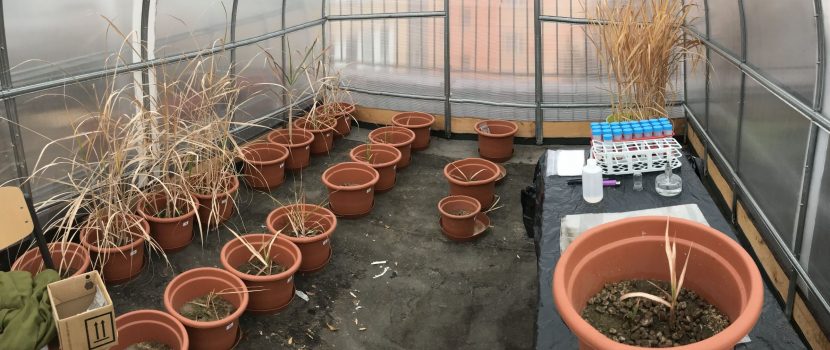
Phytodegradation of oil-contaminated soils
The publication, which was prepared in collaboration with colleagues from the Institute for Nanomaterials, Advanced Technologies and Innovation of the Technical University of Liberec, follows up the previous research on energy plants and their potential use for phytomanagement of various contaminated sites (energy biomass production on contaminated soil with soil remediation ). In this pot experiment, we focused on growing plants in substrates with an increasing proportion of real soil contaminated by the petroleum industry. We monitored the effect of contaminated soil on plants growth, but also the effect of cultivation on the rate of oil degradation in the root system and the composition of the soil bacteria community, which are the key players in the oil contamination degradation.
We found out that although the plants were able to survive in all tested variants, even the lowest proportion of contamination caused a decrease in the amount of produced biomass. And in the variants with a higher proportion, the plants were already very small. However, we found that in the less contaminated variant, where the plants still grew relatively well, significantly more petroleum substances (hydrocarbons C10-C40) decreased compared to the control variant without plants. In addition, a detailed analysis of the abundance of individual genera of soil bacteria showed that in this variant there was a significant change in the structure of the community after planting. We focused especially on genera known for the ability to degrade oil substances, and we found most of them again in a variant with a combination of contamination + plant. Based on this information, it is possible to assume that the so-called phytodegradation took place there (joint action of plants and microorganisms in their root system in degradation of contamination). However, if plants should be used for phytodegradation effectively, the reason for their limited growth must be identified. Except for petroleum, heavy metals were present in the industrial soil and it was relatively heavily saline, which most plants do not tolerate.
Diana Nebeská, JosefTrögl, AlenaŠevců, Roman Špánek, Kristýna Marková, Lawrence Davis, HanaBurdová, Valentina Pidlisnyuk. Miscanthus x giganteus role in phytodegradation and changes in bacterial community of soil contaminated by petroleum industry. Ecotoxicology and Environmental Safety 224 (2021) 112630. https://www.sciencedirect.com/science/article/pii/S0147651321007429?via%3Dihub